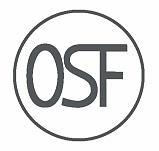Operating profit in non-industrial private forest 2023 (provisional)
According to preliminary data, operating profit in non-industrial private forestry was EUR 163 per hectare (€2,214 million) in 2023.
- The operating profit per hectare in euros were almost the same as the previous year, but in real terms they fell by more than 5% when the change in value of money was adjusted by the cost-of-living index. Compared with the average for the previous five years, the result one percent better.
- In Southern Finland, the operating profit was EUR 208 per hectare, down 7% in real terms from the previous year. The increase in the price of pulpwood species was reflected in the profit for Northern Finland; EUR 72 per hectare, up 4% on the previous year. Northern Finland includes the regions of North Ostrobothnia, Kainuu and Lapland.
- According to preliminary data, the income from timber production in private forestry was EUR 2,463 million (€181/ha). In euro terms, the income was almost the same as the previous year, but in real terms it was down by around 5%. The earnings comprise gross stumpage earnings, which are calculated by multiplying the felling volume by standing sales prices.
- Estimated investment in wood production rose to EUR 17 per hectare (€226 million), up 8% in real terms compared to the previous year. This amount includes an estimate of the value of the self-made work done by forest owners. The total cost of wood production in non-industrial private forestry, including an estimate of administrative and other expenditure, rose to over EUR 21 per hectare (+3%).
- Some investments are funded by state subsidies for non-industrial private forestry. In 2023, state subsidies were EUR 42 million (€3.1/ha). The total of subsidies increased by over EUR 5 million from the previous year.
Information about the statistics
In the statistics for Operating profit in non-industrial private forests, income comprises stumpage earnings and state subsidies for wood production. Costs includes investments in forest management and improvement in private forestry, as well as administrative and other expenditure. Incomes and investments in wood production are based on regional statistical data, while administrative and other expenditure is mainly based on estimates. The areas used in the calculations are the areas of forest land for timber production according to the National Forest Inventory (NFI).
Incomes and costs are recorded in the statistical database at the fair prices valid each time. However, price changes are examined in the texts and graphs in real terms by eliminating the change in value using the cost-of-living index. In 2023, the average inflation rate was around 6%.
Allow functional cookies to show the embedded graph.


